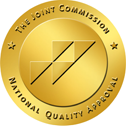
For years, the opioid epidemic has been a hot-button topic because so many lives have been touched by it. Opioid addiction can happen to anyone, anywhere, whether it’s a tragic death of a celebrity who overdosed or parents in small-town USA who are trying to get their child to kick the habit. Learn more about the history of this crisis so more people don’t succumb to the addictive nature of opioids.
Pharmaceutical Companies’ Role
Purdue Pharmaceuticals manufactures Oxycontin. They received approval from the United States Food and Drug Administration (FDA) in 1995 to manufacture and sell the drug to the public. Oxycontin didn’t show any significant difference or increased efficacy compared to previous painkillers. Purdue Pharmaceuticals decided to start an aggressive marketing program to increase the number of prescriptions written by doctors. During these efforts, pharmaceutical sales representatives failed to mention the increased risk of addiction Oxycontin posed to patients.
The FDA didn’t require Purdue Pharmaceutical to place warning labels on their advertisements or prescriptions until the early 2000s. By that time, many physicians were prescribing Oxycontin regularly to help their patients who were in pain. They thought they were helping. Most of the prescribing doctors were general practitioners who weren’t trained in addiction and often missed the signs and symptoms of their patient’s growing dependence on Oxycontin.
While most physicians weren’t aware of the highly addictive nature of Oxycontin, other physicians took advantage. “Pill mills,” doctors, pharmacists or medical clinics that prescribed the drug regardless of circumstances, profited from people’s drug addiction. They didn’t perform thorough examinations of their patients and often prescribed opioids because they profited from the increase in patients who sought their care.
As the awareness of the increased risk of addiction became a part of the national conversation about drug addiction, so did pill mill doctors. Across the country, state and federal law enforcement officers focused on eradicating the known pill mills. The article, More States Should Regulate Pain Management Clinics to Promote Public Health, states:
Compared with PDMPs (Prescription Drug Monitoring Programs), pill mill laws more directly target high-risk prescribers and settings, facilitating accountability and enforcement. Given persistently high rates of OPR-related injury and death, more states should use pill mill laws to complement their PDMPs.
The rise in opioid addiction wasn’t solely the fault of Purdue Pharmaceuticals.
Pain Is Subjective
Also in 1995, a change in how pain was rated was implemented. Previously, patients were asked to rate their pain on a fixed standard of measurement. Until 1995, this standard was definable and didn’t allow for subjective definitions of pain.
Dr. James Campbell addressed the American Pain Society, promoting the idea that pain is the fifth vital sign. Soon after the American Pain Society implemented pain as the fifth vital sign, the Veterans Health Administration followed suit. The standard for rating pain became the Numerical Rating Scale (NRS), which is highly subjective.
Pain is viewed differently by everyone. One person’s idea of extreme pain isn’t always another person’s idea of severe pain. Some people have higher pain tolerance, while others are sensitive. The NRS didn’t take into account how pain can differ from person to person.
The inability of the NRS to set a baseline for pain led to an increase in prescriptions for opioids.
The study, Unidimensional Pain Rating Scales: A Multidimensional Affect and Pain Survey (MAPS) Analysis of What They Really Measure, explains what the researchers found after they asked cancer patients questions based on the MAPS scale:
The emotional aspects of pain, including anxiety, depressed mood and anger, significantly impacted patients’ NRS scores. The research shows that physicians should not rely only on a patient’s report of pain; the physician should also consider situations or life events that can affect patients psychologically.
Helping Communities Heal
Opioid addiction quietly increased as the nation turned its eyes on other public health issues like the water problem in Flint, Michigan. As the overdose rate due to opioids or heroin increased, community leaders’ calls for help increased. To understand how the increase in opioid addiction occurred, it is vital to understand the surges in opioid use:
- Surge 1: Began after the FDA approved oxycontin in 1995, and Purdue Pharmaceuticals started its marketing campaign.
- Surge 2: Occurred approximately 15 years after the first surge. An increase in heroin overdoses marked this surge. People who no longer had access to opioids turned to heroin, also an opioid, to ease their pain.
- Surge 3: Overdoses on synthetic types of opioids were reported.
The Centers for Disease Control (CDC) began an initiative to help local, tribal and state governments. They increased access to resources, provided ways to track opioid use and helped build a responsive public health prevention plan. Further help came from the state, federal and local communities’ plans to help physicians, healthcare systems and clinics learn about proper and safe guidelines for prescribing opioids. Grassroots programs involved police, firefighters and communities.
Treatment centers located within easy traveling distance are also helping communities heal. Comprehensive treatment programs that include group, individual and family therapy help the family and the person understand drug addiction.
Holistic therapy provides a way for a person to find alternative behaviors to aid them in their cravings. Activities like yoga, meditation or mindfulness therapy increase the awareness of the mind-body connection. Learning to slow down, listen to the body and breathe in awareness provides a way to focus on well-being.
The increased awareness of opioid addiction has led to more people recognizing the signs and symptoms of opioid addiction. They could ask for help without fear of shame, embarrassment or guilt. The conversation about opioid addiction is a start to helping communities understand the impact opioids have on a person’s life and help them heal those in need.
Casa Palmera understands how opioids can take over your life. We have doctors, nurses, psychiatrists, psychologists and counselors who can help you safely withdraw from opioids and their effects on the mind and body. We welcome any inquiries you have about treatment at Casa Palmera. Call us today to set up your appointment. (855) 505-0473.




